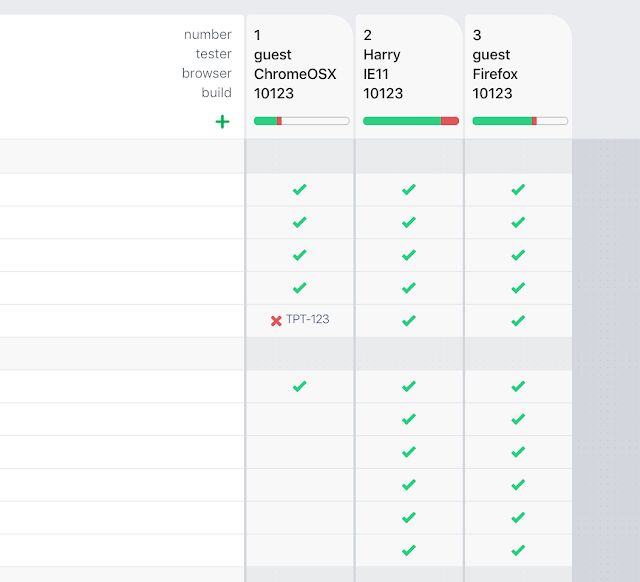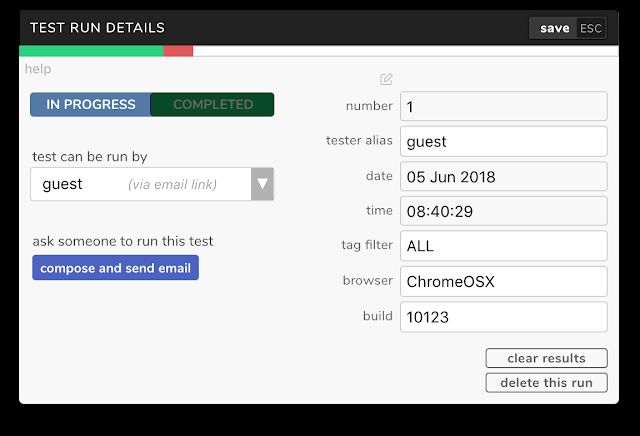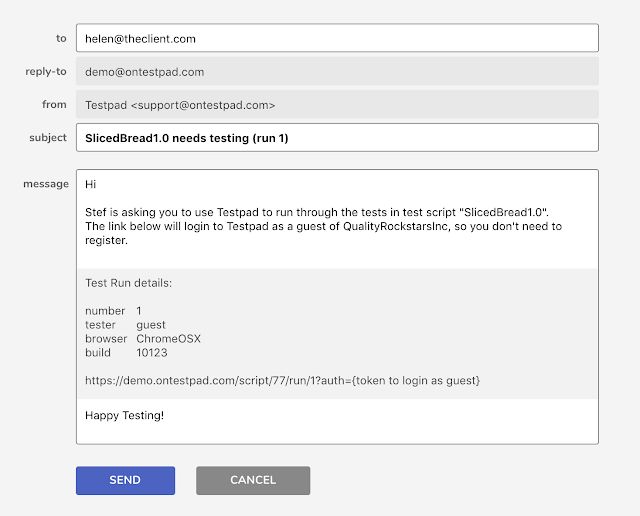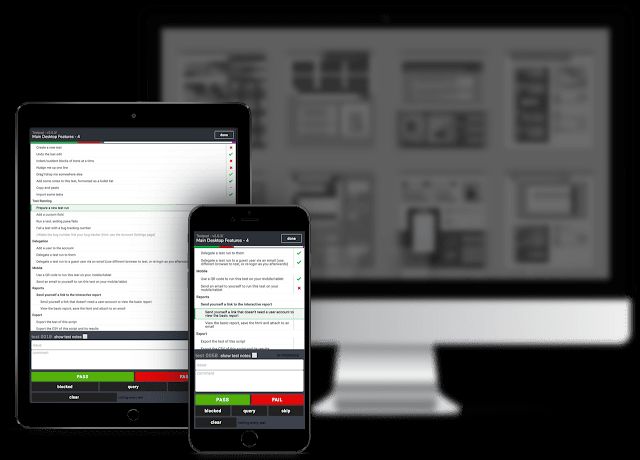Guest Testing: Anyone Can Help When the Pressure is On

Guest Testing: Anyone Can Help When the Pressure is On
Invite guest testers to help you run your tests. Perfect for asking clients to perform User Acceptance Testing, as well as just roping in more help when you're late for a release.

nvite guest testers to help you run your tests. Perfect for asking clients to perform User Acceptance Testing, as well as just roping in more help when you're late for a release.
This article explores Guest Testing, one of Testpad's most powerful features for expanding your testing capacity quickly and easily. Before diving into how it works, let's briefly look at what makes Testpad different from traditional testing tools.
Why Testpad?
Testing doesn't have to be complicated. At its core, testing is about learning what state your product is in so you can make informed decisions. Testpad embraces this simplicity with a pragmatic approach built around intuitive checklists rather than rigid test cases.
Think of Testpad as a streamlined alternative to traditional test management tools. Instead of forcing you to create detailed test cases with formal steps and expected outcomes, Testpad lets you work with simple test prompts that guide exploration. This makes it incredibly quick to write test plans and even quicker to execute them.
The result? More time actually testing your software, less time wrestling with documentation and process.
This philosophy of simplicity extends to all of Testpad's features, including Guest Testing.
What is Guest Testing?
Guest Testing does what it says on the tin: you can invite guest users to help make test runs, testing your software as prompted by your test plan and recording results – but the key point is that guest testers don't need logins to your Testpad workspace. You invite them by email and a special link gives them time-limited read-only access to just the test plan (script) that you've invited them to help test.
Why Guest Testing Matters
Guest Testing is helpful in many scenarios, including:
- Getting extra help at release time from outside the test team: developers, managers, business stakeholders, friends...
- Involving clients in testing - fantastic for de-risking delivery and building trust
- User acceptance testing - involving clients again, but the more formal (or not) version where the test plan is being used explicitly to prove (or not!) the software is ready
- Restricting visibility of test plans containing sensitive content, because guests can only access the one test plan (script) they were invited in for
Preparing for Guest Testing
1. Test Runs
Test results in Testpad are recorded in columns to the right of test prompts. Each column is to record a different set of results against the same prompts (although filters could be used to vary the subset that's actually tested). Columns are mostly used to establish test runs against different environments such as different browsers for webapps, or different phones for mobile apps. Columns can also be used for the same environment but for different testers (you get a higher chance of finding bugs if different brains can look at the same test ideas).

2. Assigning to Guest
For guest testing then, you initiate the process by assigning a Test Run (column) to "Guest".
Test Run assigment is managed in the Test Run details dialog which you open by any of:
- creating a new test run (which auto opens the dialog for the new test run)
- right clicking on the header of a test run column and selecting edit details
- hovering over the header of a test run and clicking on the pencil icon (edit)
Test Run assigment is only available for Test Runs that are still "IN PROGRESS" (as opposed to "COMPLETED"). So if you can't see the assignment drop-down box, that'll be because the test run is already completed! In which case, why would you be trying to assign it to someone else? :)
When the dropdown box is used to select "Guest" as the assignee, a button below appears for composing and sending an email. Use this button to address, and optionally edit the contents of, an invitation email that will give the recipient a link they can click on to make the test run.

3. Email Invitation
The recipient of the email will get a link, like a document sharing link, that gives them some restricted access into your testpad account. Specifically, they get read-only access to that one test plan (script) to record results against that one test run (column).
For practice, you can send guest test invitations to yourself to see what the experience is like. Though note that clicking on a guest link will log you in as Guest... which means logging you out as your normal user.
Top tip: for practicing with guest testing, open the guest test links in a different browser. That way you can stay logged in in your usual browser.

4. Performing guest test runs
This doesn't really need description - which is the whole point!
1. Click on the link you received.
2. Follow the test prompts.
3. Record appropriate comments and the pass/fail status.
Simples.

Well, OK. The simplicity here will depend on your test prompts and the complexity of your software under test. Testpad does it's bit to not add to the complexity however, reducing the task to prompting and recording results.
If your prompts are more exploratory in style, i.e. they're not full of detailed instructions to do this, then that, then that, then expect exactly this and that; but instead suggest looking at e.g. unicode input in the login page, or forgotten passwords for returning users, then they will need the Guest Testers to engage brain and be imaginative in what they actually test.
Mobile
Lastly, don't miss that Guest Testing links can be opened on mobile devices as well as desktop devices. On most tablets and mobile phones, you get a mobile version of the testing interface. Being prompted for and collecting results on a separate device can be very practical; it saves the tester from constant context switching on their main screen between the app under test and the test mgmt tool.

Any questions about how any of this works, please don't hesitate to contact support@testpad.com.
Happy (guest) testing.
PS. Guest Testing is a premium feature available from the Team Plan and upwards. However, it is available in the Free Trial, so give it a go and see for yourself how convenient it is to bring in extra, or even external, help when the pressure is on to make a release. And while you're trying it out, experience firsthand how Testpad's practical approach to test management can make your entire testing process more efficient and effective.
